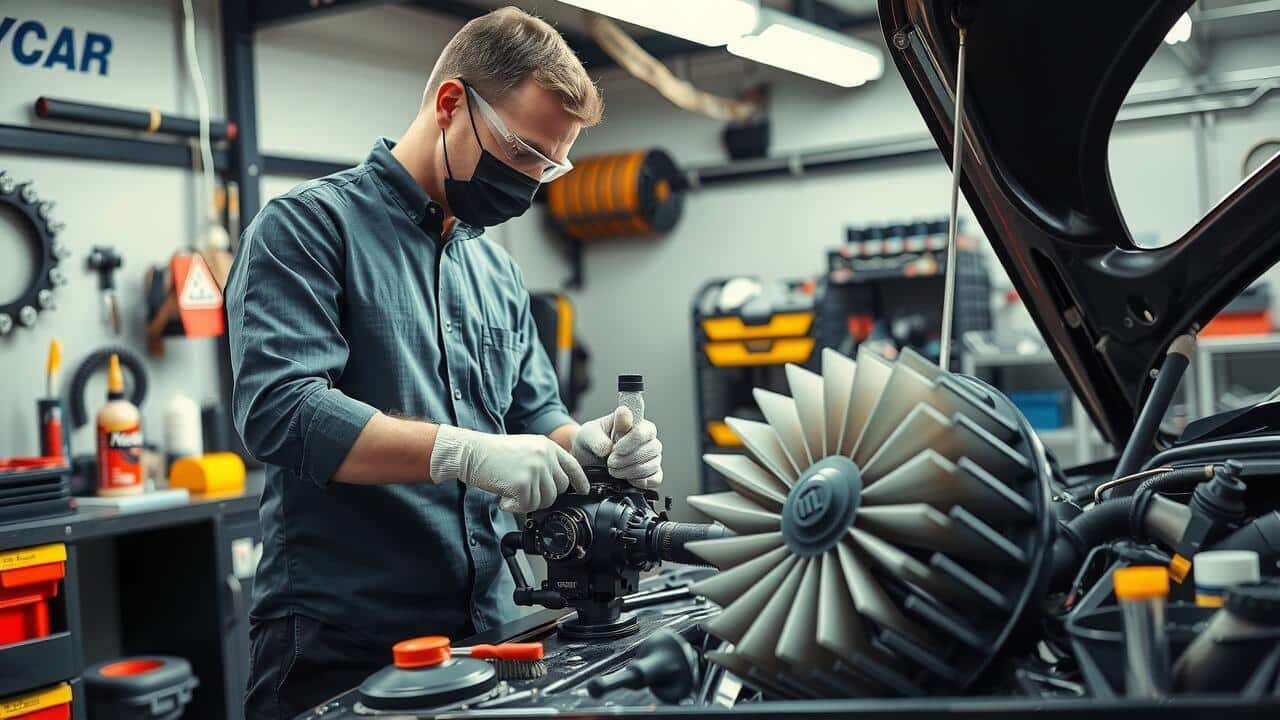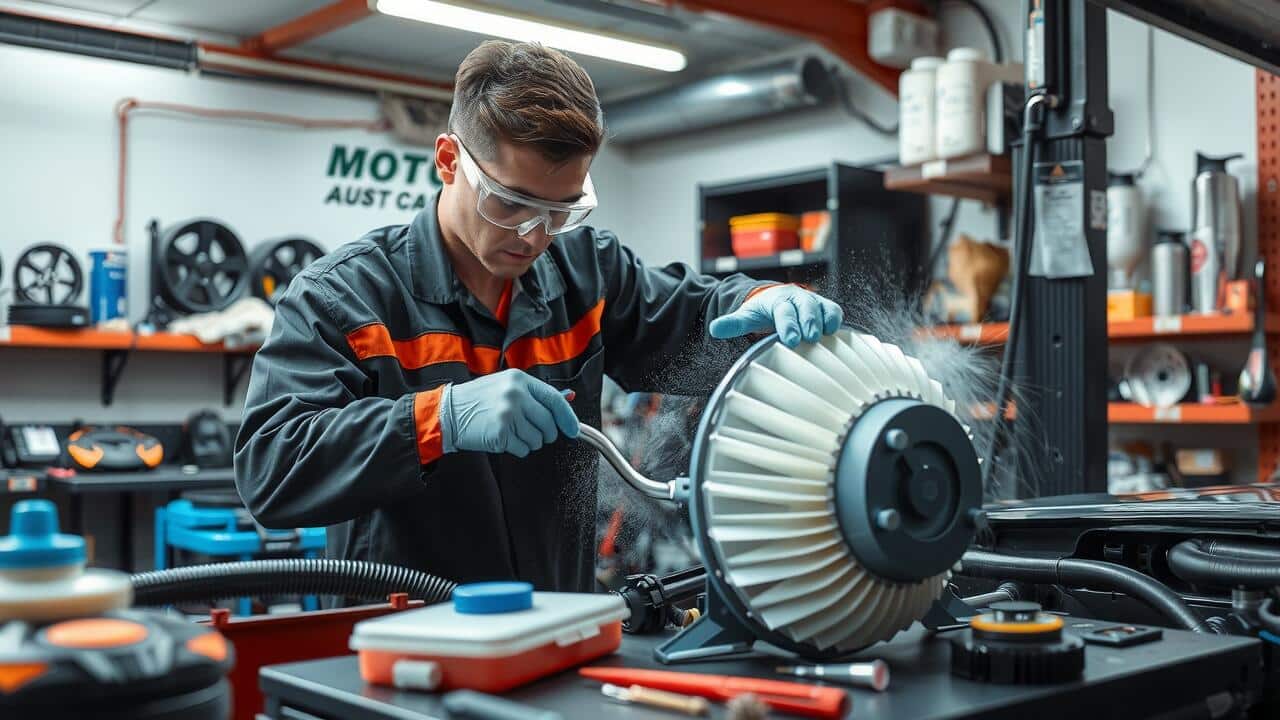
Table Of Contents
Cleaning Methods for the Blower Motor
Blower motor cleaning is essential for maintaining optimal performance in heating and cooling systems. Various methods can be employed to effectively clean the debris and buildup that accumulates over time. For those who prefer a DIY approach, utilizing compressed air is a popular choice. This method allows for the safe removal of loose dirt and dust without having to disassemble the entire unit. Local professionals often offer services under “Blower Motor Cleaning near me,” allowing for thorough cleaning by experienced technicians who understand the intricacies of the system.
In addition to compressed air, liquid cleaners specifically designed for blower motors can be used to tackle more stubborn debris. These cleaners can dissolve grime and restore the motor to its original efficiency. It is important to follow the manufacturer’s instructions to avoid damage. Regular maintenance is crucial, and knowing how to clean the blower motor properly ensures longer life and efficiency for the system. For those unsure of their cleaning techniques, seeking professional help under “Blower Motor Cleaning near me” is a wise investment.
Using Compressed Air Effectively
Using compressed air is an effective method for cleaning the blower motor and removing accumulated dust and debris. Start by disconnecting the power supply to ensure safety during the cleaning process. Equip yourself with a canister or compressed air compressor, adjusting the nozzle to a suitable pressure to avoid damaging sensitive components. Direct the airflow into the motor and surrounding areas, focusing on getting debris out of tight spots. This method minimizes the risk of scratching surfaces while efficiently dislodging particles.
If you’re unsure about performing the cleaning yourself, searches such as “Blower Motor Cleaning near me” can yield local professionals who specialize in this type of maintenance. Engaging trained technicians ensures that your blower motor is cleaned thoroughly without compromising its integrity. Many experts use compressed air as part of their cleaning process, guaranteeing that your system operates efficiently after service. Taking these steps can help prolong the life of your blower motor and maintain optimal performance.
Cleaning the Blower Wheel
Cleaning the blower wheel is an essential step in maintaining overall airflow efficiency. A buildup of dust and debris can impede air movement and lead to overheating. Begin by removing the blower wheel from the motor. This may require loosening screws or clips that hold it in place. Once detached, inspect the wheel for any visible blockages that could hinder its performance.
After removing any large debris, use a soft-bristle brush or a vacuum attachment to clear away smaller particles. Pay special attention to the blades, ensuring they are free from dirt and lint. If necessary, a damp cloth can be used to wipe down the surfaces. Regular maintenance, including thorough blower motor cleaning, can significantly enhance the lifespan of your HVAC system and improve indoor air quality. For those seeking professional assistance, searching for “Blower Motor Cleaning near me” can lead to qualified services in your area.
Techniques for Thorough Cleaning
Thoroughly cleaning the blower motor requires a systematic approach. Start by ensuring the power is disconnected before attempting any cleaning methods. Using a soft brush or cloth, gently remove loose debris from the motor housing and components. Avoid using water or harsh chemicals which can damage the motor. For those seeking professional help, searching “Blower Motor Cleaning near me” can yield local services equipped to handle the task efficiently.
After the initial dusting, focus on the blower wheel. If accessible, remove it for a more comprehensive cleaning. A vacuum with a brush attachment can effectively eliminate dirt from hard-to-reach areas. For stubborn grime, a diluted detergent solution may be applied with a cloth, followed by thorough drying to prevent moisture accumulation. Regular maintenance and periodic cleanings aid in improving performance and extending the lifespan of the blower motor.
Inspecting for Damage
Inspecting a blower motor for damage is a crucial step in the maintenance process. Look for any signs of wear and tear, including frayed wires, rust, or cracks in the casing. Pay close attention to the connections and mounts, as even minor issues can impact performance. If you notice any irregularities, it’s essential to address them promptly to avoid further complications.
For those seeking professional help, searching for “Blower Motor Cleaning near me” can yield local services that specialize in such inspections. A trained technician can provide a thorough assessment of the blower motor’s condition. This ensures that any underlying problems are identified and remedied, enhancing the efficiency and longevity of the unit. Regular inspections not only improve performance but also help in avoiding costly repairs down the line.
Signs of Wear and Tear
Regular inspection of the blower motor is essential to ensure its longevity and efficiency. Signs of wear and tear can include unusual noises, such as grinding or squeaking, which may indicate that components are misaligned or damaged. Another indicator can be reduced airflow, which often suggests that debris buildup or internal damage is inhibiting the motor’s performance.
If any physical damage is visible, such as cracks in the blower wheel or excessive rust, it may be time for repairs or replacement. It is advisable to consult a professional for an evaluation if you notice these signs. Searching for “Blower Motor Cleaning near me” can help you find local experts who can thoroughly assess and service your blower motor.
FAQS
How often should I clean debris from my blower motor?
It’s recommended to clean the blower motor at least once a year, or more frequently if you use it regularly or live in a dusty environment.
Can I use water to clean the blower motor?
No, it’s not advisable to use water on the blower motor as it can cause electrical damage. Use dry cleaning methods like compressed air instead.
What tools do I need to clean the blower motor effectively?
Essential tools include compressed air, a soft brush, a vacuum cleaner with a hose attachment, and a damp cloth for cleaning non-electrical parts.
How can I tell if my blower motor needs cleaning?
Signs that your blower motor may need cleaning include reduced airflow, strange noises, or visible dust and debris accumulation around the motor and blower wheel.
Is it safe to clean the blower motor myself?
Yes, cleaning the blower motor can be done safely by following recommended procedures, but always ensure the power is turned off and consult the manufacturer’s instructions if needed.
